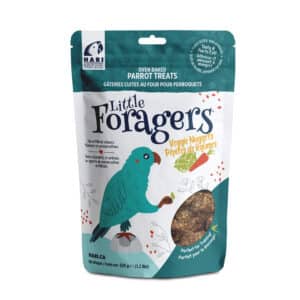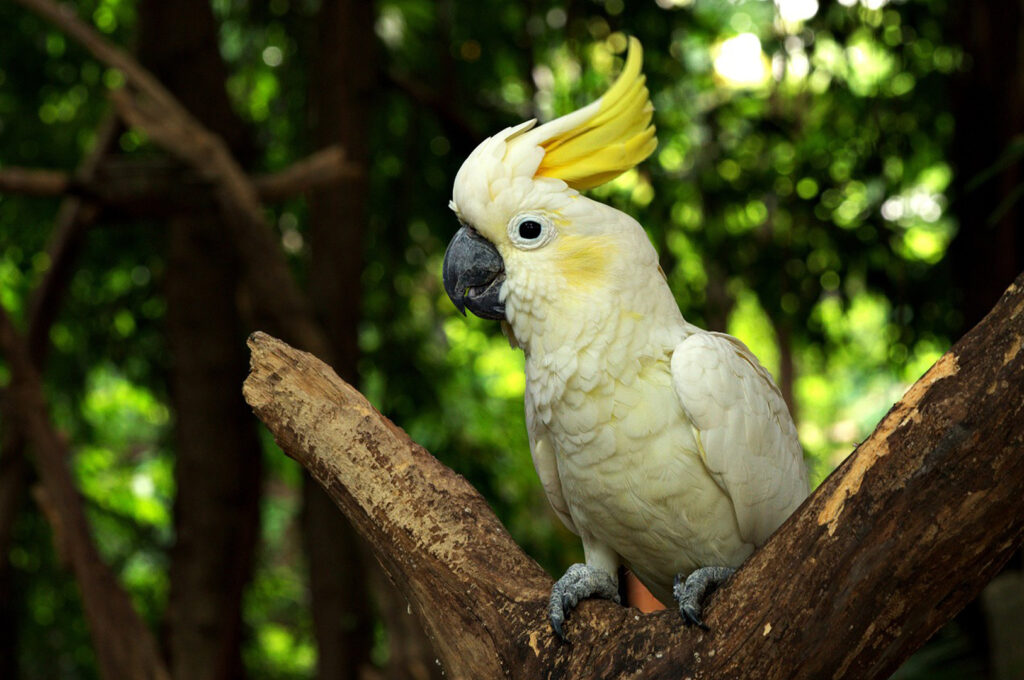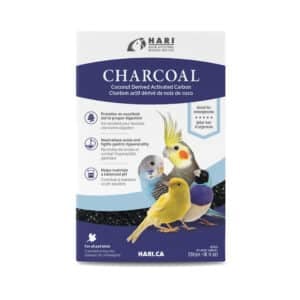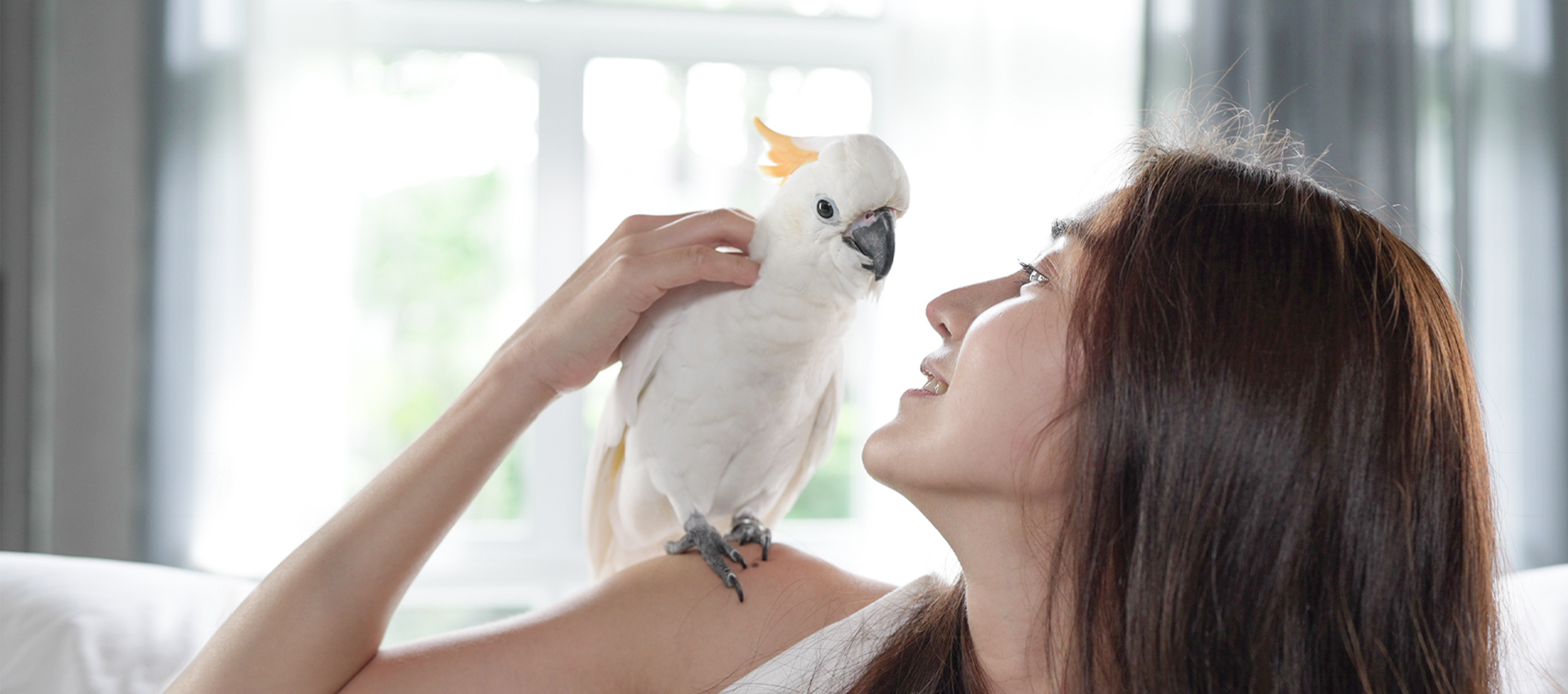Your cart is currently empty!
HARI Official Brand Site
Common Species
Umbrella Cockatoo (Cacatua alba), Goffin’s Cockatoo (Cacatua goffiniana), Moluccan Cockatoo or Salmon Crested (Cacatua moluccensis), Bare Eyed Cockatoo or Little Corella (Cacatua sanuinea), Rose breasted Cockatoo (Eolophus roseicapilla), Black Palm Cockatoo (Probosciger aterrimus).
Origin/Habitat
Australia
Affectionate, Intelligent and Challenging
Cockatoos are known for their charming and affectionate personalities, making them a beloved pet for many. These birds are intelligent and thrive on social interaction, which makes it easy for them to form close bonds with their owners. However, owning a cockatoo requires a significant amount of time, patience, and effort. It’s important to remember that while some cockatoos may be loving and cuddly, others may show aggression and biting tendencies as they grow older. Additionally, their social nature may lead to separation anxiety if they are not given enough attention. Caring for a cockatoo is a demanding task that requires proper husbandry and socialization, which may not be suitable for first-time bird owners.
Cockatoos in the wild are found mainly in Australia and the Indonesian islands. They live in a variety of habitats from tropical jungles to grassy plains and dry savannahs.
While there are 21 species of cockatoos as well as many subspecies, the species commonly kept as pets include the Umbrella Cockatoo, Salmon Crested Cockatoo, Rosebreasted Cockatoo, Goffin’s Cockatoo, Bare-eyed Cockatoo, as well as the occasional Black Palm Cockatoo.
Cockatoos are long lived birds. Cockatoos have an average lifespan of 30 to 50 years although they can live longer.
Health Booklet
Keeping track of bird health by recording their growth, development, behavior and environment in a booklet can help ensure that your companion parrot will be healthy and happy for many years to come.
Physical Description
Cockatoos are medium to large sized parrots. Cockatoos, depending on the species, measure from 28cm to 61 cm (11 to 24 inches) and weigh 280-1200 grams (10-42 ounces).
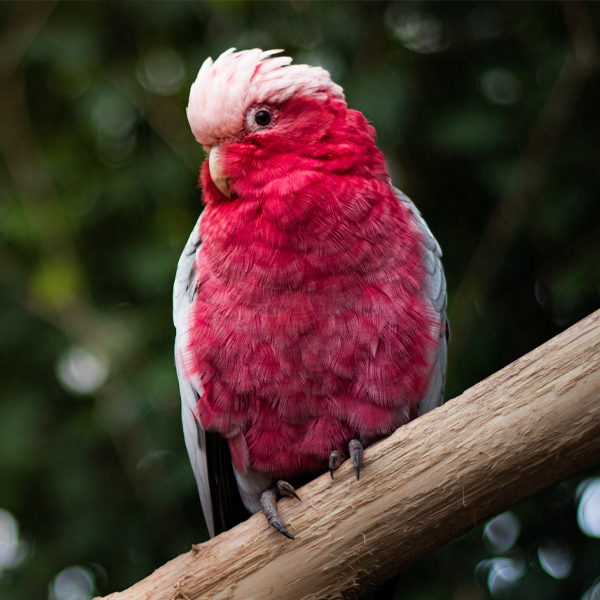

Most cockatoo species are white while others are shades of grey and pink as the case of Rose breasted cockatoo. Black cockatoo species have predominated black feathers and unique markings depending on the species.
Sex
The gender of most cockatoos is difficult to determine by physical characteristics alone.
DNA sexing is the most accurate way to determine the sex of a cockatoo, however the sex of some adult cockatoo species, such as the Moluccan or Umbrella cockatoo can be determined by the eye colour. Males will be black, whereas the female’s iris will be brown or mahogany.

Personality Traits & Behaviors
Cockatoos are highly intelligent and affectionate birds that thrive on physical attention. They enjoy cuddling, but it’s equally important to teach them how to play independently. If deprived of affection, they may become depressed or exhibit neurotic behaviors. Therefore, it’s crucial to provide them with at least 3 to 4 hours of playtime outside their cage per day.
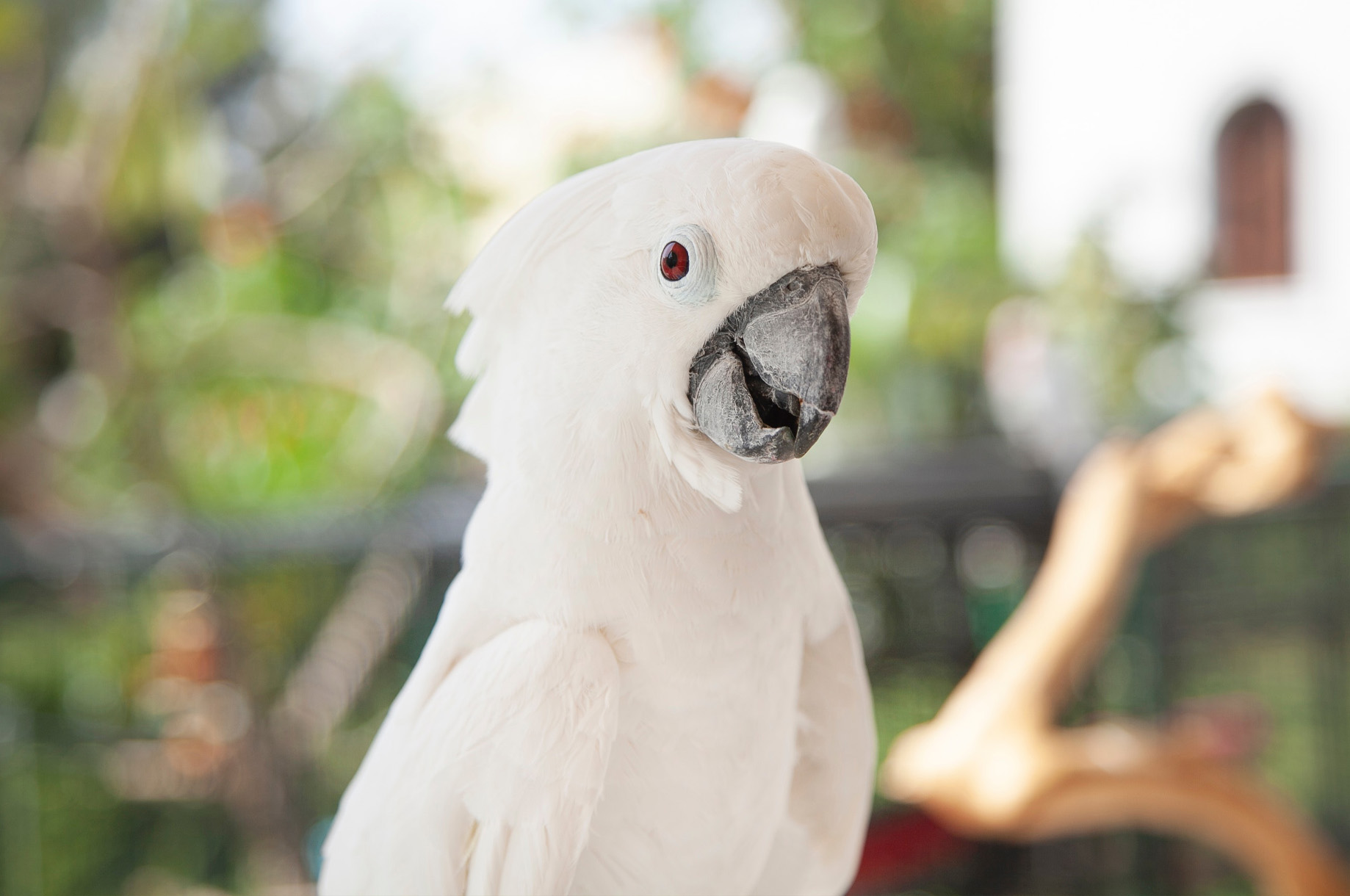
Noise Level/Speech/Song
These birds can be incredibly loud, especially during certain times of the day such as mornings and evenings. In addition to their loud calls, some cockatoos can also mimic sounds and phrases, although they’re not as clear as other parrot species, such as African Greys or Amazons. They tend to imitate sounds and phrases rather than speaking in clear words and sentences.
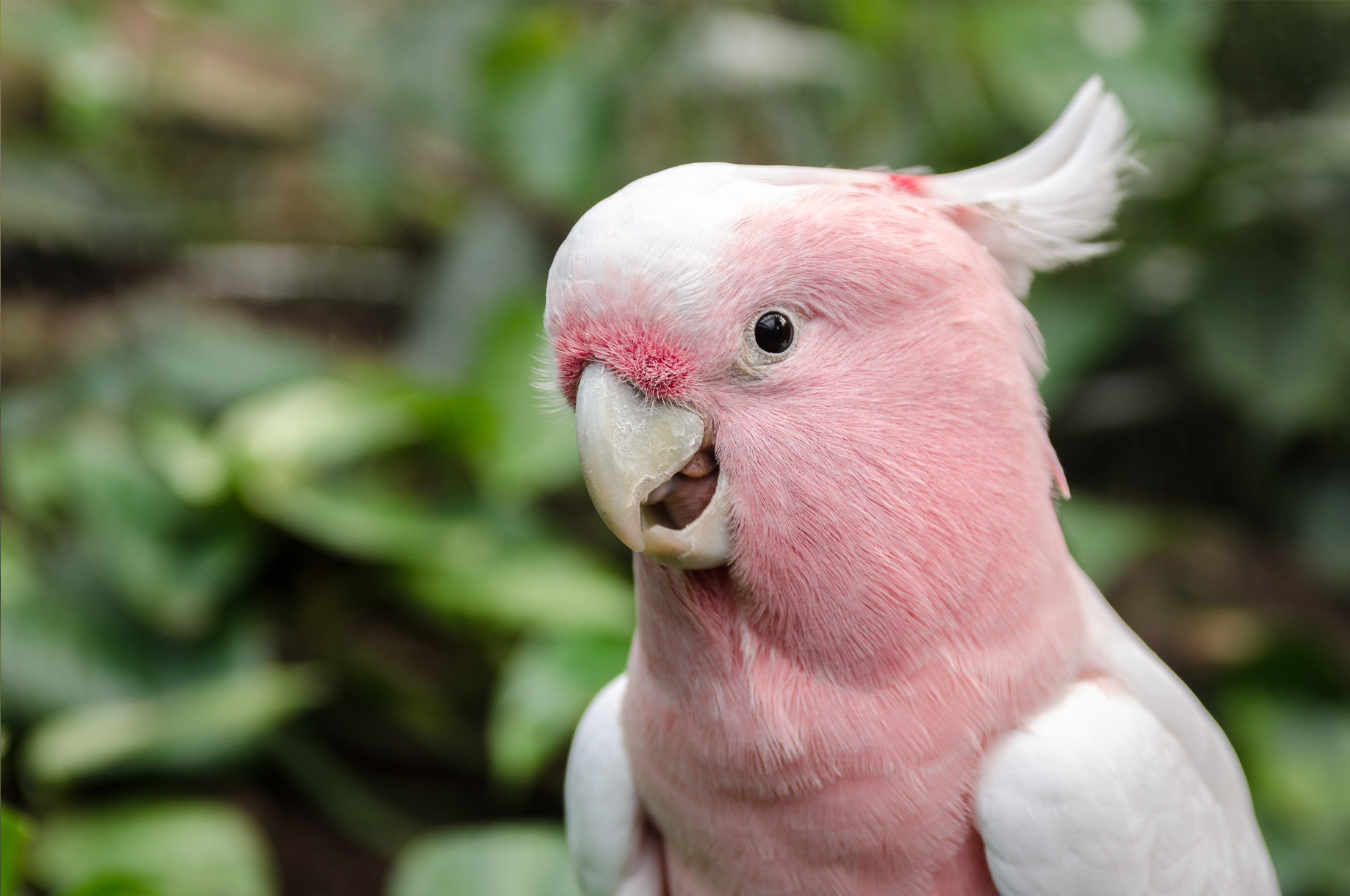
Intelligence & Learning
Cockatoos are renowned for their remarkable intelligence and their ability to tackle complex problems. Their brains are proportionately larger than their bodies, which allows them to comprehend cause-and-effect relationships and utilize tools. They are capable of imitating human speech, learning a vast array of words and phrases, and even creating their own vocalizations. Cockatoos are also quite skilled at performing tricks, such as unlocking cages, solving puzzles, and playing games. Studies suggest that they can resist the urge to eat in exchange for a more appealing reward, and they are also known for their rhythmic dancing abilities.
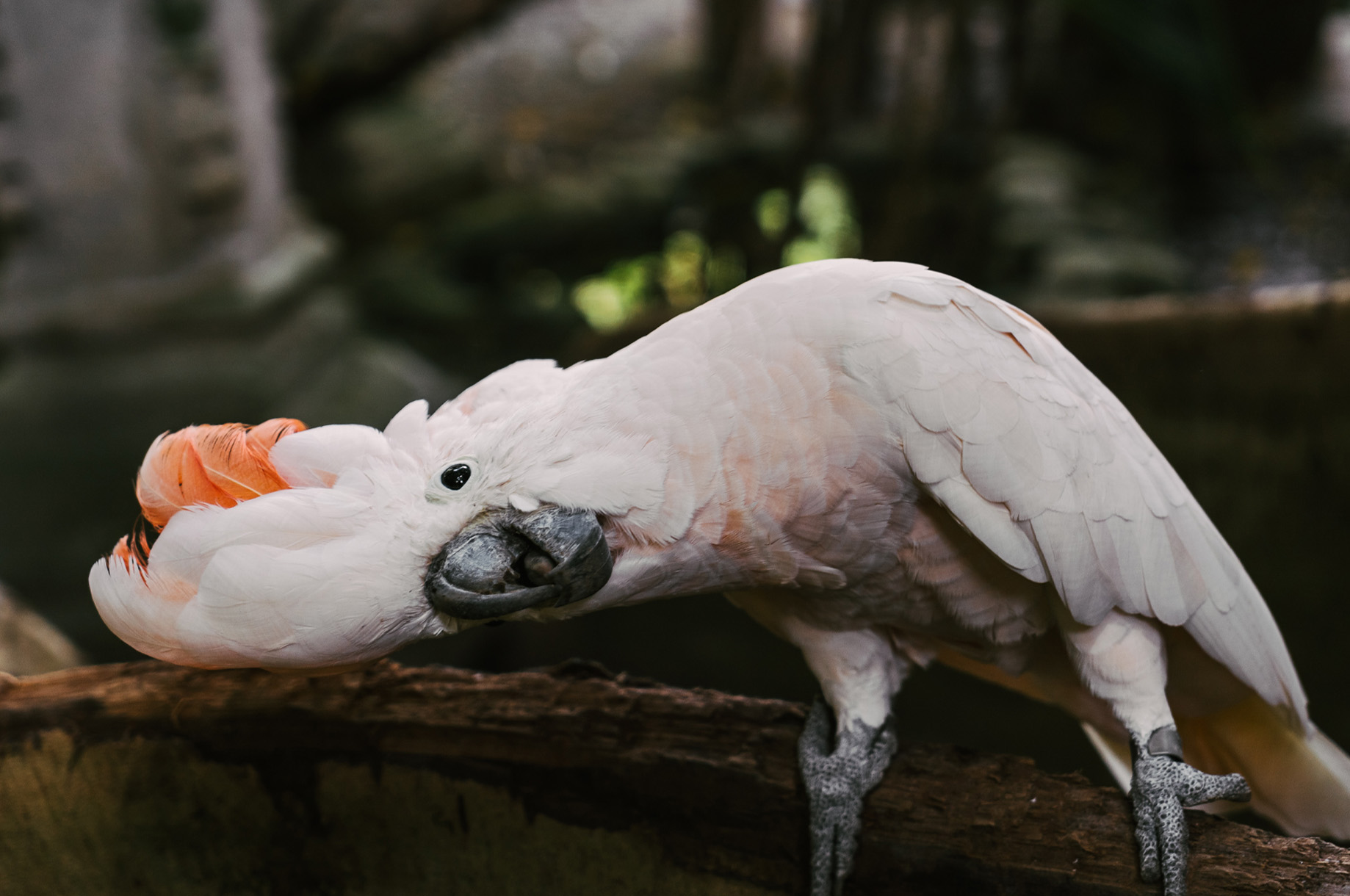
Threats/Conservation
The survival of many cockatoo species in the wild is threatened by habitat loss, making their populations vulnerable and near threatened. Other threats include illegal wildlife trade, predation by invasive species, and climate change affecting their food and water availability, breeding success, and vulnerability to disease.

Relationship with Humans
Cockatoos are incredibly sociable birds that crave affection from their owners. When their emotional needs go unmet, they may exhibit neurotic behaviours such as feather picking and self-mutilation. While physical attention is appreciated, it is essential to be aware of their boundaries. Touching certain parts of their bodies can cause sexual frustration and lead to aggression. Stick to stroking their heads to avoid this issue.
Similar to human children, cockatoos should have a routine. This is because predictability and consistency are key to keeping them happy and healthy. By establishing a set schedule, cockatoos can learn to self-entertain while anticipating attention at specific times of the day. This is especially important for proper socialization, particularly the bird has reached sexual maturity. In addition to physical interaction, mental stimulation through toys, puzzles, and other activities will help keep cockatoos engaged and content.
Care
Cockatoos should have strong cages that are made of stainless steel or wrought iron to withstand their tough beak.
The general rule of thumb when buying a bird cage is to buy the largest cage you can afford. For optimum health and safety, the cage should be at least two and a half times the width of the birds’ wingspan in all directions. Cage bar spacing should never be so wide that your bird could stick his head through, and his tail feathers should not be able to touch the bars when he is perched comfortably. Also consider your bird’s beak strength to determine the proper gauge of the bars as some birds have been known to bend the bars and escape. A rectangular cage with horizontal bars in which your bird has plenty of room to climb and play is the best environment for your parrot. Your parrot will be happiest in a well-ventilated room with as much natural light as possible, yet away from direct sunlight and drafts. Your bird will want to be part of the action but not right in the middle of it. Avoid placing your bird’s cage in the kitchen as there are many hazards including vapors from heated PTFE coated pans (PTFE is better known as TeflonTM), hot stoves, pots of boiling water, and cooking fumes all of which can be very harmful to your bird. The cage and accessories should be thoroughly cleaned and disinfected weekly. Make sure your bird stays healthy by providing them with fresh food and water every day. Don’t forget to wash their dishes daily!
.
Time out of the cage every day for socialization and exercise is important. Parrots enjoy supervised activities on a play gym loaded with their favorite toys and enrichment food. Make sure he does not have access to open doors or windows, toilets with the lid up, hot stoves, moving ceiling fans or large panes of glass. It’s also a good idea to ensure he does not chew on or ingest anything unsafe such as treated or painted wood or unsafe house plants. Do not keep your bird in a room where sprays such as perfume, hair spray, air fresheners or aerosol sprays are used frequently.
For the safety of your beloved parrot, we advise against leaving them unattended with other pets like dogs, cats, or ferrets.
Cockatoos, depending on the species will eat an assortment of seeds, fruits, nuts, berries, blossoms and roots. Some will feed on the ground, others in trees.
When it comes to feeding your Cockatoo, there are countless opinions to consider. Here’s what we believe: a high-quality extruded diet – such as Tropican – serves as the foundation of your parrot’s diet, while other healthy enrichment foods provide welcome variety.
Pelleted bird food is the ideal source of nutrition to keep your parrot healthy. However, it’s important to offer variety, too, gourmet seeds, dried fruits, vegetables, and nuts (such as Tropimix), beans, and fresh fruits and vegetables all provide essential nutrients and diversity to your parrot’s diet. Sensible, healthy table foods such as cooked pasta, rice, hard-boiled eggs, multigrain toast, and unsalted crackers can also serve as treats in small amounts.
It is crucial to avoid unhealthy people foods. Never feed your parrot chocolate, alcohol, caffeine beverages, or avocado as even small amounts can be toxic. Salty or sugary foods should also be avoided. Check out our feeding recommendations for most parrot species.
Of course, fresh water every day is very important too. Remember to wash and refill your parrot’s water bowl daily to keep your bird healthy and happy.
Cockatoos need ten to twelve hours of uninterrupted sleep per night. If your bird cage is normally situated in a room where there is a lot of activity or movement, it is best to move it to a secluded dark area at night. Sleep is a vital to a Cockatoo’s well-being.
Many bird owners will cover the bird cage at night to help block out extra light (especially during the summertime). A cover can also keep the cage warmer (for those living in colder climates).
Placing a comfortable perch higher up in the cage will give them a sense of security and keep their feet healthy. If you do not plan on covering the cage or if the bird suffers from night terrors try using an infrared basking light or small night light in the room.
Cockatoos need a variety of perch types and sizes. Improperly sized or dirty perches contribute to Pododermatitis or Bumblefoot. Offer your bird at least three types of perches appropriately sized for his feet: cotton or sisal rope; natural wood perches with a variety of diameter. Keep perches clean and if you use cotton or sisal rope, check frequently for signs of loose strands. Often perches will need to be replaced due to normal wear and tear. If you use a grooming perch, avoid placing it at the highest level of the cage or near food and water dishes.
It is important to provide your cockatoo with lots of different toys. They have very powerful beaks and love to chew. Therefore, it is important to provide your cockatoo with wooden toys to chew as well as a variety of other toys such as bells, ladders, and swings. And, because of their high level of intelligence, cockatoos benefit from mental or puzzle type toys, especially if they are foraging toys. If you’re unsure which toys are suitable, check out the Smart Play and Active Play toys for recommendations tailored to your bird’s size and requirements.
Cockatoos are adorable, cuddly birds that bond quickly with their owners. They are naturally playful and enjoy dancing, too!
One way to develop a strong bond with your Cockatoo is through consistent positive behavior training. Start early, teaching basic commands like “step up” and “step down”. Use positive reinforcement and praise to encourage good behavior. Training your bird on a stand with a favorite treat is an excellent way to spend time away from their main cage.
To prevent fear and aggression towards strangers, it’s important to introduce your parrot to new situations. Socializing your bird by exposing them to different people, environments, toys, and foods is key. The more varied experiences your bird has, the more comfortable and well-adjusted they will be.
Be cautious around small children, as a Cockatoo’s powerful beak can cause harm to small, prodding hands.
Cockatoos can produce feather dust from their special powder-down feather which can be problematic for people with allergies. To keep their skin and feathers healthy and minimize the amount of dust they produce, Cockatoos should be misted with a spray bottle or offered shower opportunities several times a week. Be sure to remove seeds or pellets from the cage before misting as damp food can grow mold and bacteria. Always bathe your bird early in the day and let him dry naturally in a draft free area.
While trimming your parrot’s flight feathers is optional, many owners choose to do so. Trimming is a simple and painless procedure, similar to giving a regular haircut, and should be done twice a year during the bird’s moulting period. Regular inspections and grooming of the toenails are also important. roper nail trimming is essential to prevent the vein from extending to the tip of the nails.
It’s suggested to have a professional bird groomer take care of the trimming of your bird’s nails and wings to avoid accidentally cutting a blood feather if you lack experience. Keep in mind that trimming wings does not guarantee that your bird cannot fly, as even a small number of grown-in feathers can give your bird flight capability. As a result, never allow your bird outside unless it is in a secure cage or wearing a properly fitted bird harness.
The following is a list of common household dangers: Non-stick surfaces (like TeflonTM coated pans), oven cleaner and self-cleaning ovens, cigarette Smoke, paint and paint fumes, scented candles, household cleaners, floor polish, hairspray, chlorine bleach, perfume, aerosol sprays, nail polish and nail polish remover fumes and ingesting harmful or toxic house plants. It’s important to make sure everyone in the family is aware of food and other products in the home that are potentially toxic to amazons. Avocados, chocolate, coffee beans, onions, salt, and fruit seeds or pits should never be offered. Ceiling fans, cupboards, blinds and open doors & windows can also pose a risk as your pet may fly into, get trapped or simply fly away.
Birds are notorious for concealing signs of illness, so it’s crucial to monitor any slight changes in your bird’s health or behavior. If you are a Cockatoo owner, it’s recommended to schedule an annual checkup with a veterinarian for a comprehensive evaluation and preventive health care plan. Some veterinarian practices specialize in treating birds and exotic pets (referred to as avian or exotic vets). While some clinics can provide routine bird appointments, they may refer you to a certified avian veterinarian for more complex cases. Consulting with an avian veterinarian is a valuable resource for obtaining advice on appropriate health care for your beloved bird.
Availability in the Pet Market
Cockatoos can be obtained from an avian specialty shop, pet dealer, or a reputable breeder. Online adoption organizations and rescues can also be a viable option for those looking to adopt a Cockatoo
…. Cockatoos are fascinating creatures that require a lot of attention and care from their owners.
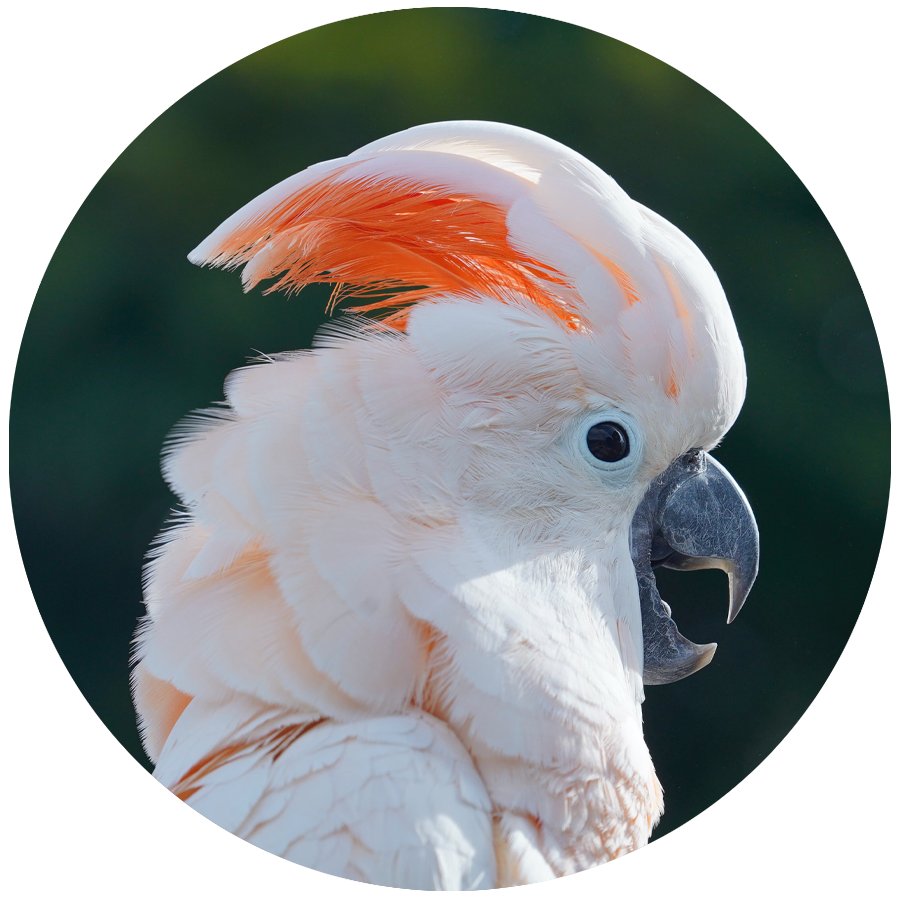
Aviculture
Breeding Habits
In their natural habitat, sexual maturity and reproduction timelines differ among cockatoo species and their environment. Some species may take years to find an ideal place to breed young ones. Most cockatoos mate for life and breeding typically starts early in the year, when food and vegetation are abundant. A clutch usually contains 2-4 eggs.
Breeding aviary-bred cockatoos can be a challenge, particularly with high-strung species. Larger cockatoos like the Moluccan or Umbrella species are often kept in ample-sized cages with a dual entry nest box to prevent the male from blocking the female. It’s critical that these birds have a secure location to nest. On average, most cockatoo species mature between 3-8 years of age and will lay 2-4 eggs.
Hatchling to Fledgling
Most aviculturists catering to the pet bird trade prefer to have parent birds raise their young for about two to three weeks before beginning hand feeding. Breeding parrots should be in optimal health and receive proper nutrition to support the needs of both the “expectant” parents and the nestlings. Tropican High Performance 4mm, 8mm, Sticks and Tropimix Small & Large Parrot are excellent options, as well as vegetables and fruits high in beta-carotene to meet the nutritional needs of breeding parrots. Adding Prime Vitamins to the diet can also benefit breeding pairs on a predominately seed-based diet.
Suggested Products
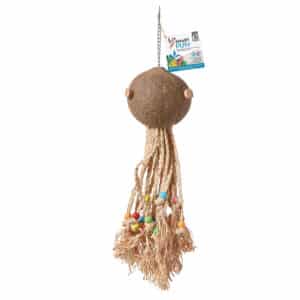
Smart.Play
Octopus, Enrichment Parrot Toy, for Medium to Large Birds
Enrichment Parrot Toy, for Medium to Large Birds
Made in Canada
